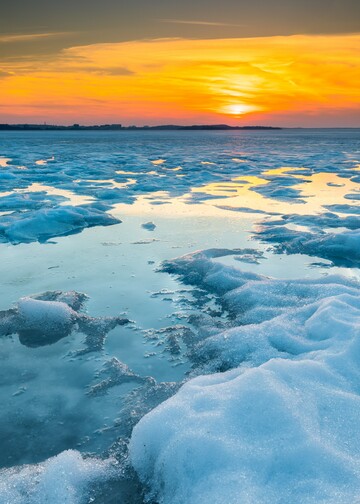What is melting?

Melting polar ice is a good representation of melting because it shows a solid (ice) changing into a liquid (water).

Melting polar ice is a good representation of melting because it shows a solid (ice) changing into a liquid (water).
Have you ever seen ice cream melt on a hot day? Or a chocolate bar melt in your hand? That's melting! Melting is when a solid turns into a liquid.
When a solid melts, the molecules in the solid start to move around more and more. They get so much energy that they break free from the fixed positions they have in the solid. This allows the molecules to flow past each other, which is what makes a liquid.
The temperature at which a solid melts is called its melting point. The melting point of water is 0 degrees Celsius (32 degrees Fahrenheit). This means that if you heat ice up to 0 degrees Celsius, it will start to melt.
There are many different things that can melt. Some common examples of melting solids include:
- Ice
- Chocolate
- Wax
- Butter
- Cheese
Melting is a very important process in the world around us. It helps us to make food, to create art, and to even build roads.
Here are some concluding thoughts about melting:
- Melting is a reversible process. This means that if you melt a solid, you can also freeze it again.
- The melting point of a substance can change depending on the pressure. For example, water has a melting point of 0 degrees Celsius at sea level, but it has a melting point of -21.1 degrees Celsius at a pressure of 100 atmospheres.
- Melting is a way for energy to be transferred. When a solid melts, the energy that is used to break the bonds between the molecules is released as heat.
I hope this helps you to understand melting!
What is freezing?
Freezing is when a liquid turns into a solid. You may have seen water freeze into ice cubes when you put them in the freezer. The molecules in a liquid slow down and stick together tightly when it gets very cold, forming a solid. For example, when you put a glass of juice in the freezer, it turns into a popsicle!
What is melting point?
Every substance has a special temperature called the melting point. It is the temperature at which a solid changes into a liquid. For example, the melting point of butter is around 32 degrees Celsius (90 degrees Fahrenheit). So, if you leave a stick of butter outside on a warm day, it will start to melt because the temperature is higher than its melting point.

Melting polar ice is a good representation of melting because it shows a solid (ice) changing into a liquid (water).